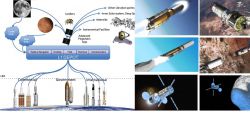R
RVHM
Guest
With the demise of the Space Shuttle program, and possibly any sort of future Shuttle-Derived Launch Vehicle, a great deal of technological assets are going to be lost to the American space program. Which one do you believe would be most important to keep for future architectures, and why?
I think the most important asset we should keep is the SSME. A very well-know quantity, the SSME has been used, built upon and improved for over three decades, resulting in the finest hydrolox engine ever to exist. It has reached a level of development where its performance is unlikely to be surpassed by any chemical-based rocket engine. Besides, the only American alternative, the RS-68, is much less efficient.
That is why I think we should keep at least the SSME from the Shuttle stack, what do you think we should keep?
I think the most important asset we should keep is the SSME. A very well-know quantity, the SSME has been used, built upon and improved for over three decades, resulting in the finest hydrolox engine ever to exist. It has reached a level of development where its performance is unlikely to be surpassed by any chemical-based rocket engine. Besides, the only American alternative, the RS-68, is much less efficient.
That is why I think we should keep at least the SSME from the Shuttle stack, what do you think we should keep?



